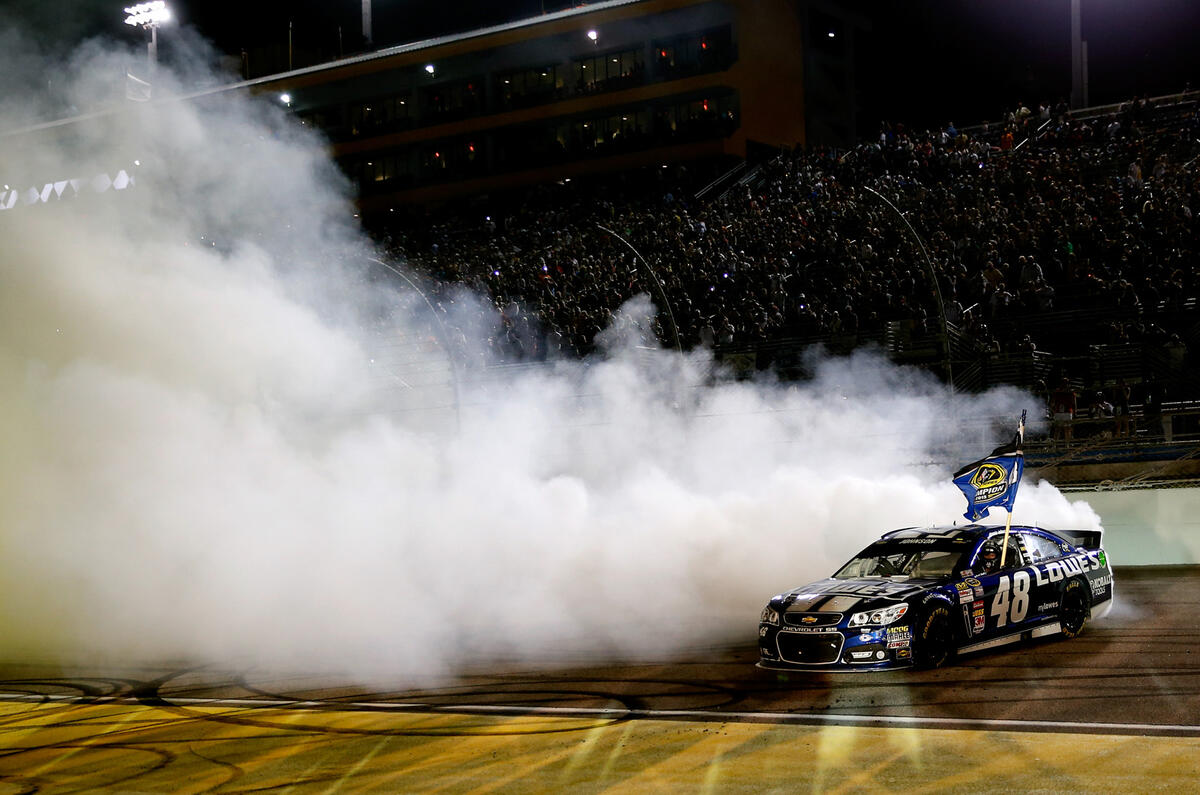One of the talking points of the Formula One season so far has been the decision by the sport's chiefs to award double points for the final race of the year.
The idea is to spice up the action by making it more likely the championship battle goes down to the final round. But the idea has been largely lambasted by fans, who see it as an artificially contrived gimmick – and who rightly point out that it would have actually increased Sebastian Vettel’s winning margin last season.
Still, if F1 fans think that’s contrived, they should take a look at the new system just introduced by the NASCAR Sprint Cup. This year, the hugely popular American stock car series will feature a new championship format that guarantees a four-car, winner-takes-all showdown in the final round.
Now, NASCAR has always been a branch of the sport that has put the focus on creating fan friendly drama and excitement. So when Matt Kenseth won the 2003 title by a big margin despite winning just one race all year, it wasn’t really what the sanctioning body wanted. They wanted a champion to have to win races – and for the title to go down to the final races. For 2004, they introduced the Chase for the Sprint Cup.
While NASCAR has always denied the Chase was inspired by the playoff format used in most American sports, it certainly achieved a similar goal. Originally, the top ten drivers in the standings after 26 races had their points totals reset, and then battled for the title over the final ten races. It was artificial, but it certainly helped build interest in the final races.
The Chase has undergone several tweaks since then, expanding to 12 drivers and with various points tweaks to put a greater emphasis on winning races. Interestingly, the Chase didn’t stop one driver from dominating: Jimmie Johnson has won the championship in six of the ten Chase years, including 2013.
His task will be harder this year: NASCAR has now revamped the entire system, putting the focus firmly on winning.
Alright, pay attention now: there are 16 spots available in this year’s Chase Grid, which will go to the top 16 drivers in the points with a win after the first 26 races. Effectively, if you win, you’re in. Simple. Now, this is where things get a bit mad.








Join the debate
Add your comment
SEASON LONG CONSISTENCY
And of course it is inevitable that some seasons one team or one driver will nail the formula and take the trophy home, that is also part of the make-up of F1 - technological advancement and innovation, which sometimes leaves the rest massively behind.
What F1 needs is to keep technical regulations tight, yet challenging - 2010 being a fantastic example, one of the best seasons in history.
All this is difficult, but at the end of the day Formula 1 should be about the best car and driver combination - if a TV audience is all that the FIA are interested in, and the audiences are not prepared to be interested in a little more than a massive spectacle every minute then what is it all about? Someone needs to maintain the purity of racing, as difficult as it may be.
This probably explains why I don't follow NASCA.
This probably explains why I don't follow NASCA.
What's wrong with the fastest team / driver winning the title?
F1 is supposed to be the ultimate, and if one driver / team dominates, then they should be congratulated - not asked to participate in a glorified lottery.
That's not to say the sport couldn't be improved. Why not allow random grid orders. That would test drivers' overtaking ability - and over a season no driver would gain any advantage. Or better still separate the drivers from the teams, so that each driver gets to drive each car for a couple of races. That would truly identify the best drivers - and the best cars for that matter...